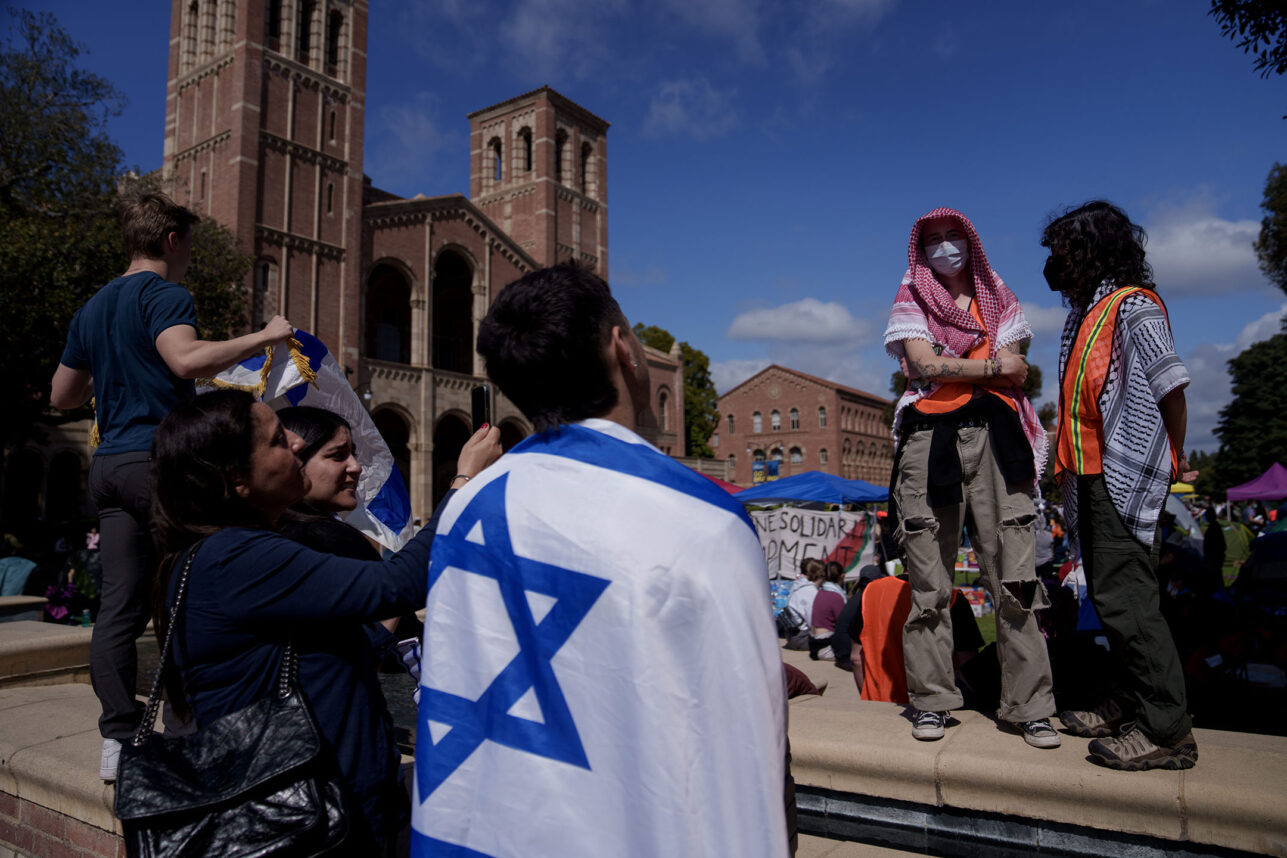Jews worldwide mark the approaching High Holy Days with annual visits to the graves of departed loved ones.
An ancient custom, Kever Avot, literally “graves of the fathers,” dates almost as far back as Jews themselves.
“It’s part of a basic concept in the earliest stratum of Judaism that you to go the grave of the patriarchs in Hebron and they’ll intercede on your behalf,” said Pinchas Giller, American Jewish University professor of medieval Jewish thought. “Even talmudic traditions have the notion of people going to the grave of the patriarchs to ask for things.”
The tradition of visits before the High Holy Days began in the 14th century. More recent Jewish history recounts regular pilgrimages to the burial sites of revered rabbis and loved ones in Sephardic and pre-World War II European Jewish communities on the anniversary of a death, fast days and other times during the year. Visitors showed love and respect for the departed and prayed for the soul’s safe journey to heaven.
Judaism is imbued with a variety of teachings and traditions regarding the sanctity of graves and Jews go to cemeteries with different levels of consciousness, Giller said. Before Rosh Hashanah and during the 10 Days of Repentance culminating in Yom Kippur, gravesite pilgrimages take on an even higher level of significance because they come at a time of spiritual soul-searching and renewal.
For many, the belief in the eternality of the soul, which some trace to the patriarch Abraham, underlies this custom. Common to all streams of Judaism, spiritual afterlife is embedded in Jewish prayer, tradition and folklore. Kabbalistic theory teaches that the nefesh, one of the three parts of the human soul, stays at the grave after death, making it a portal to God, Giller said. That concept often translates into the notion of the soul’s role as an intermediary between God and the living.
“During the holy weeks before the High Holy Days, people are encouraged to do whatever they can to bestow God’s mercy for a sweet new year,” said Rabbi Chaim Mentz, Chabad of Bel Air’s director. “There is a separation of the body and soul [after death] and the soul remains here attached to this world to gather requests from others. The reason [we visit graves] is because the soul is still there waiting to take our requests to God.”
From the start of Elul, the Hebrew month preceding the High Holy Days, until Yom Kippur, that means asking the deceased to pray on behalf of the living for a favorable decree and a good year.
To that end, members of Chasidic movements perform Kever Avot at the graves of their spiritual mentors, Mentz said. Bratslav Chasidim travel to Ukraine to the grave of movement founder Rabbi Nahman of Bratslav. In Queens, N.Y., thousands of Chabad followers gather each year at the grave of the Lubavitcher Rebbe, Rabbi Menachem M. Schneerson. Those who can’t make the trip send notes bearing their requests with journeying friends and relatives.
For some Jews, the season’s critical themes of forgiveness and repentance inspire their Kever Avot practice.
“Repenting and forgiving don’t end at the time of death,” said Rabbi Debra Orenstein, spiritual leader of Makom Ohr Shalom. “Sometimes there is unfinished business.”
The High Holy Days provide a framework for reflecting on relationships with lost loved ones, Orenstein said. Over time, those relationships change, especially as the living come to understand mitigating circumstances that account for the deceased person’s behavior and actions while they were still alive.
“It’s an especially auspicious and fruitful time to visit the grave and have a conversation with loved ones in which you forgive and repent,” Orenstein said. “When you come to Yizkor, you’re in a different place regarding your relationship with that person.
Gathering at the grave also facilitates healing within families by creating an opportunity to grant forgiveness to one another, she added.
Others visit graves to connect with their past and to contemplate the life they want to live.
“Rosh Hashanah is a time to plan for the future,” said Rabbi Brian Schuldenfrei of Sinai Temple. “By thinking of the legacy of those who came before us, we consider the legacy we want to leave.”
Some religious and ethnic communities have their own unique customs for Kever Avot. The Kaddish, which affirms the living’s relationship with God and elevates the souls of the deceased to their final resting place, is typically recited along with El Maleh Rahamim, a plea for rest for the soul that originated in the Jewish communities of Western and Eastern Europe.
Sephardic Jews perform Kever Avot on erev Rosh Hashanah so they begin the holidays with a sense of connection with their families, said Rabbi Daniel Bouskila, spiritual leader of Sephardic Temple Tifereth Israel. They recite the Hashkavah, a memorial prayer with separate texts for men and women, and Yehi Ratzon, in which they ask the deceased to pray on their behalf for forgiveness and a good year. Persian Jews add Tehillim Psalm 119, a Hebrew acrostic in which family members read the stanzas that begin with the letters in their loved ones’ names. They also bring flowers and rose water to the grave, in accordance with Iranian tradition, and spices (minei besamim) according to Nessah Synagogue’s Chief Rabbi David Shofet.
Some synagogues hold community services before Rosh Hashanah or during the 10 Days of Repentance.
Other customs include placing stones on the grave to mark the visit, which some believe dates back to ancient times when piles of stones were used to indicate burial sites. Giving tzedakah on behalf of the deceased is also customary since Jewish tradition teaches that those dwelling in God’s presence cannot perform this mitzvah.





















 More news and opinions than at a Shabbat dinner, right in your inbox.
More news and opinions than at a Shabbat dinner, right in your inbox.